MATCH EXPONENTIAL FUNCTIONS AND GRAPHS
Every exponential function will be in the form of
y = a b(x - h) + k
- Here y = k is the equation of horizontal asymptote.
- By applying x = 0, we will get the y-intercept.
From the graph given, we can notice the above information and match it with the equation.
Match the equation with the graph (the asymptotes are shown on the graph)
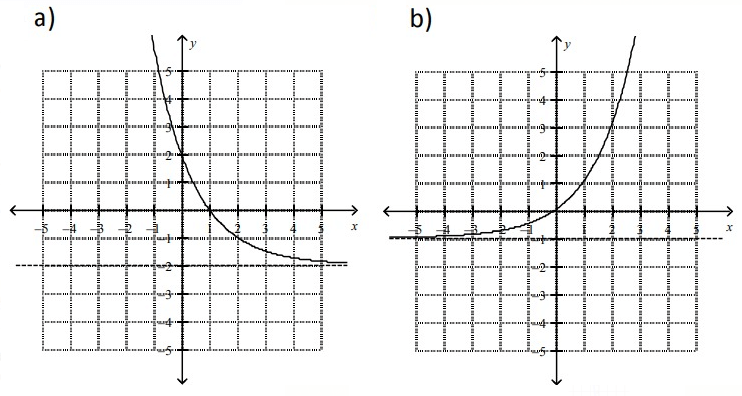
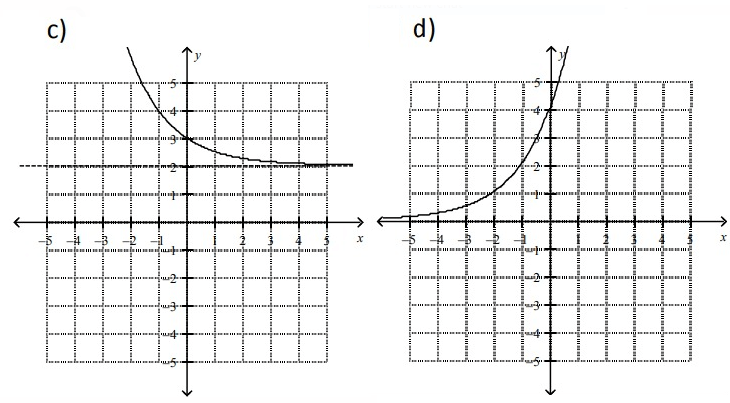
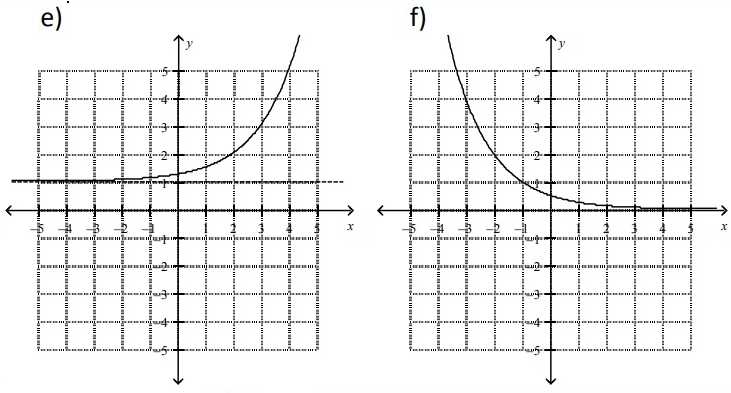
Problem 1 :
f(x) = 4(0.5)x - 2
Problem 2 :
f(x) = 4(2)x
Problem 3 :
f(x) = (0.5)x+1
Problem 4 :
f(x) = (0.5)x + 2
Problem 5 :
f(x) = 2x-2 + 1
Problem 6 :
f(x) = 2x - 1
Problem 1 :
f(x) = 4(0.5)x - 2
Solution:
Finding Horizontal asymptote:
Comparing the equation with y = a b(x - h) + k
f(x) = 4(0.5)x - 2
Here b = 0.5 it lies between 0 to 1, it is decay function.
Equation of horizontal asymptote will be in the form y = k
Here k = -2
Then the horizontal asymptote will be y = -2.
Finding x and y intercept:
|
x-intercept : Put f(x) = 0 0 = 4(0.5)x - 2 4(0.5)x = 2 (0.5)x = 2/4 (0.5)x = 0.5 x = 1 (1, 0) |
y-intercept : Put x = 0 y = 4(0.5)0 - 2 y = 4(1) - 2 y = 4 - 2 y = 2 (0, 2) |
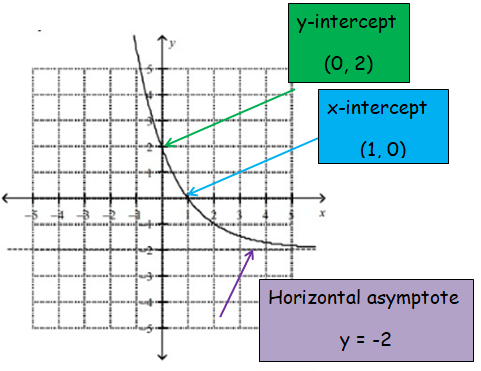
So, graph (a) is correct.
Problem 2 :
f(x) = 4(2)x
Solution:
Finding Horizontal asymptote:
Comparing the equation with y = a b(x - h) + k
f(x) = 4(2)x
Here b = 2 it is greater than 1, it is growth function.
Equation of horizontal asymptote will be in the form y = k
Here y = 0
Then the horizontal asymptote will be y = 0
Finding x and y intercept:
Put x = 0
y = 4(2)0
y = 4

So, graph (d) is correct.
Problem 3 :
f(x) = (0.5)x+1
Solution:
Finding Horizontal asymptote:
Comparing the equation with y = a b(x - h) + k
f(x) = (0.5)x+1
Here b = 0.5 it lies between 0 and 1, it is decay function.
Equation of horizontal asymptote will be in the form y = k
Here y = 0
Then the horizontal asymptote will be y = 0
Finding y intercept:
Put x = 0
y = (0.5)0+1
y = 0.5
So, the y-intercept is (0, 0.5).
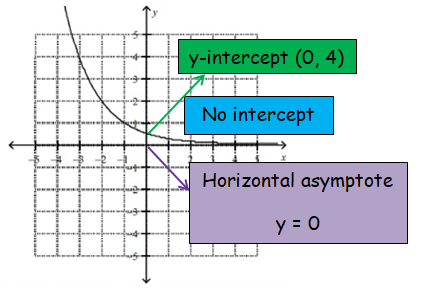
So, graph (f) is correct.
Problem 4 :
f(x) = (0.5)x + 2
Solution:
Finding Horizontal asymptote:
Comparing the equation with y = a b(x - h) + k
f(x) = (0.5)x + 2
Here b = 0.5 it lies between 0 and 1, it is decay function.
Equation of horizontal asymptote will be in the form y = k
Here y = 2
Then the horizontal asymptote will be y = 2
Finding y intercept:
Put x = 0
y = (0.5)0 + 2
y = 1 + 2
y = 3
So, the y-intercept is (0, 3).
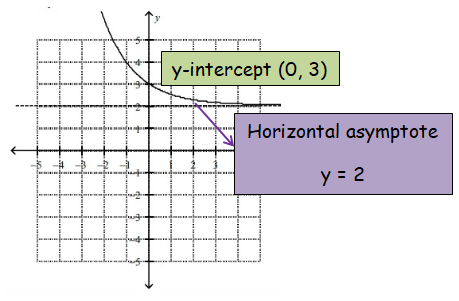
So, graph (c) is correct.
Problem 5 :
f(x) = 2x-2 + 1
Solution:
Finding Horizontal asymptote:
Comparing the equation with y = a b(x - h) + k
f(x) = 2x-2 + 1
Here b = 2 is greater than 1, it is growth function.
Equation of horizontal asymptote will be in the form y = k
Here y = 1
Then the horizontal asymptote will be y = 1
Finding y intercept:
Put x = 0
y = 20-2 + 1
y = 1/4 + 1
y = 5/4
So, the y-intercept is (0, 1.25).
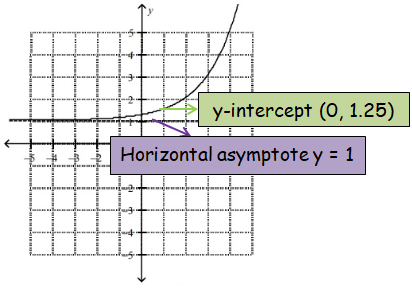
So, graph (e) is correct.
Problem 6 :
f(x) = 2x - 1
Solution:
Finding Horizontal asymptote:
Comparing the equation with y = a b(x - h) + k
f(x) = 2x - 1
Here b = 2 is greater than 1, it is growth function.
Equation of horizontal asymptote will be in the form y = k
Here y = -1
Then the horizontal asymptote will be y = -1
Finding y intercept:
Put x = 0
y = 20 - 1
y = 1 - 1
y = 0
So, the y-intercept is (0, 0).
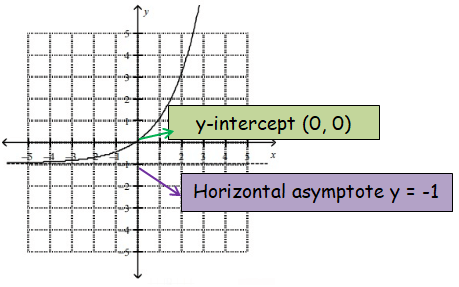
So, graph (b) is correct.
Recent Articles
-
Finding Range of Values Inequality Problems
May 21, 24 08:51 PM
Finding Range of Values Inequality Problems -
Solving Two Step Inequality Word Problems
May 21, 24 08:51 AM
Solving Two Step Inequality Word Problems -
Exponential Function Context and Data Modeling
May 20, 24 10:45 PM
Exponential Function Context and Data Modeling